Preventing food contamination through temperature monitoring involves using data loggers and real-time temperature and humidity monitoring solutions to ensure food is stored and transported under safe conditions. Here's a comprehensive guide on how to implement this:
1. Understanding the Importance of Temperature and Humidity Monitoring
- Temperature Control: Ensures food is kept at safe temperatures to prevent bacterial growth.
- Humidity Control: Prevents moisture-related spoilage and maintains the quality of dry goods.
2. Selecting the Right Equipment
Data Loggers
- Types: low-cost data loggers, calibrated data loggers.
- Features: Temperature range, accuracy, battery life, memory capacity. Temperature ranges from +210 degrees Celsius to -196 degrees Celsius depending on the requirements. All available in temperature only or temperature and humidity options.
Real-Time Monitoring Solutions
- Types: Wireless sensor networks, IoT-based systems, and cloud-based platforms.
- Features: Real-time alerts, remote access, data analytics, and integration capabilities.
3. Setting Up the System
Installation
- Identify Critical Control Points: Places where temperature and humidity control are crucial (e.g., storage rooms, refrigerators, transport vehicles).
- Install data loggers: Place sensors in these critical points to monitor conditions continuously.
Calibration
- Regular Calibration: Ensure all loggers (sensors) are calibrated according to manufacturer recommendations to maintain accuracy.
4. Monitoring and Data Management
Real-Time Monitoring
- Dashboard: Use a central dashboard to view real-time data from all sensors.
- Alerts: Set up alerts for deviations from safe temperature and humidity ranges. Alerts can be sent via text, email, or software notifications.
Data Logging
- Continuous Recording: Ensure data loggers are continuously recording data, which can be downloaded and reviewed regularly.
- Storage: Store historical data securely for regulatory compliance and analysis.
5. Analysis and Action
Data Analysis
- Trend Analysis: Analyse data trends to identify potential issues before they become critical.
- Reporting: Generate regular reports for quality control and regulatory compliance.
- Multi-logger validation: Generate one report for multiple Temprecord data loggers in minutes.
Corrective Actions
- Immediate Response: Respond immediately to any alerts indicating unsafe conditions.
- Preventive Measures: Use data insights to implement preventive measures, such as adjusting storage protocols or improving insulation.
6. Training and Protocols
Staff Training
- Training Programs: Train staff on the importance of temperature and humidity monitoring and how to use the monitoring systems.
- Response Protocols: Develop and train staff on protocols for responding to alerts and taking corrective actions.
7. Maintenance and Review
Regular Maintenance
- Equipment Check: Regularly check and maintain monitoring equipment to ensure it is functioning correctly.
- System Updates: Keep software and systems updated to benefit from the latest features and security patches.
Periodic Review
- Review Processes: Periodically review monitoring processes and protocols to ensure they are effective.
- Continuous Improvement: Use feedback and data to continuously improve monitoring systems and food safety protocols.
Example Workflow
- Setup: Install wireless sensors in storage and transport areas.
- Monitoring: Use a cloud-based platform to monitor temperature and humidity in real-time.
- Alerts: Receive real-time alerts on your phone, tablet or computer, if conditions deviate from the set parameters.
- Action: Immediately check and rectify any issues (e.g., adjust refrigeration settings or move food to a different storage area).
- Review: Generate monthly reports to analyse data and identify areas for improvement.

